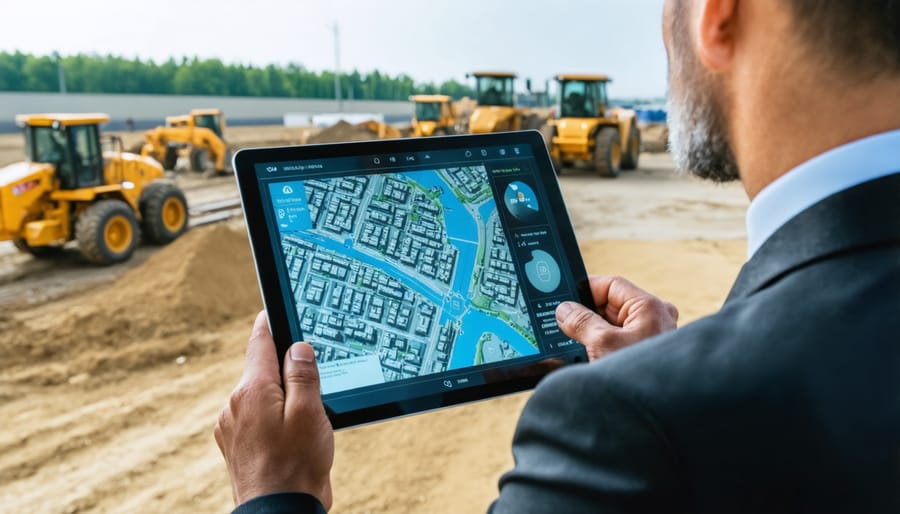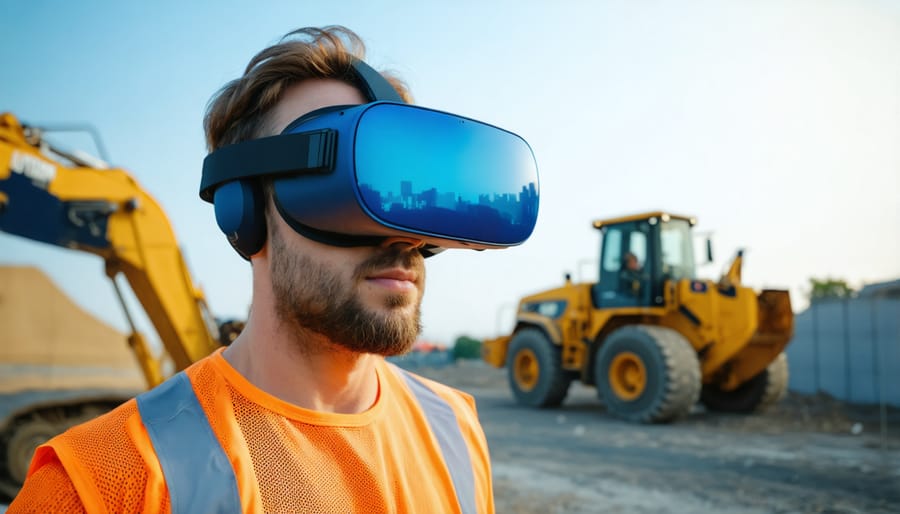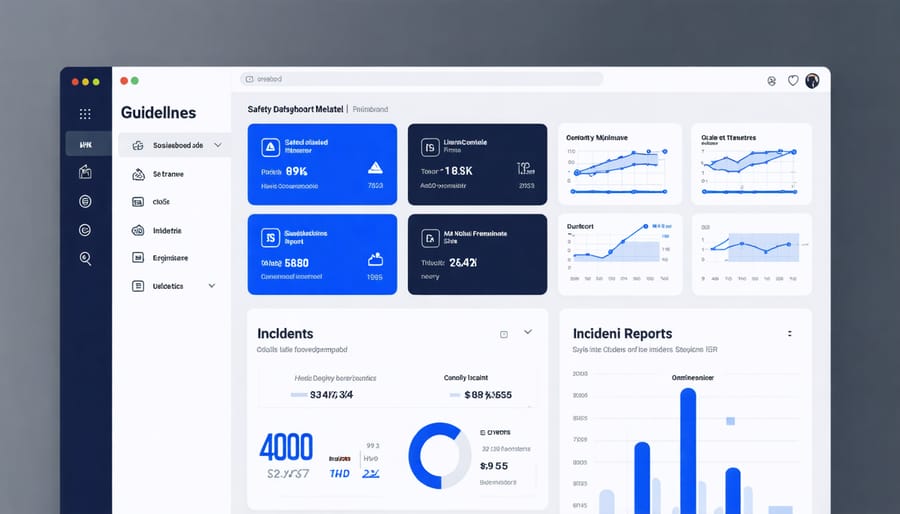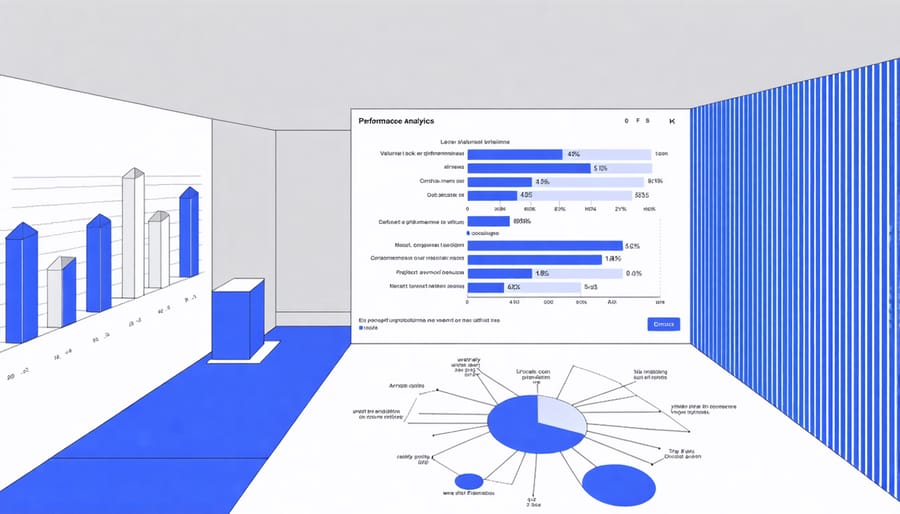The rapid digital transformation in construction has revolutionized how industry leaders manage complex projects, driving efficiency gains of up to 35% through advanced digital systems. These sophisticated platforms now integrate real-time data analytics, artificial intelligence, and cloud-based collaboration tools to orchestrate every aspect of construction operations—from resource allocation to quality control.
Modern digital construction management systems have emerged as the cornerstone of successful project delivery, enabling unprecedented visibility into project performance, risk mitigation, and resource optimization. By leveraging IoT sensors, machine learning algorithms, and advanced BIM integration, these systems provide construction executives with powerful decision-making capabilities that were unimaginable just a decade ago.
For construction organizations navigating increasingly complex projects, implementing these digital solutions has become not just an operational advantage but a competitive necessity. With the ability to process millions of data points simultaneously, predict potential issues before they occur, and facilitate seamless communication across diverse stakeholder groups, these platforms are fundamentally reshaping how construction projects are conceived, executed, and delivered.
The integration of advanced digital systems marks a paradigm shift in construction management, offering a comprehensive solution to the industry’s most pressing challenges: productivity optimization, cost control, and project predictability. This transformation represents the next evolution in construction excellence, where data-driven insights meet practical application in real-world construction scenarios.
Real-Time Workforce Tracking and Resource Allocation
GPS-Based Personnel Tracking
GPS-based personnel tracking has revolutionized workforce management in modern construction sites, offering real-time visibility and enhanced operational control. This technology enables project managers to monitor worker locations, movements, and time spent in different site zones with unprecedented accuracy.
By utilizing wearable devices or smartphone applications equipped with GPS capabilities, construction firms can track their workforce while maintaining compliance with safety protocols. The system provides valuable data on worker distribution, helping managers optimize resource allocation and identify potential bottlenecks in project execution.
Key benefits include improved emergency response capabilities, as managers can quickly locate and assist workers in distress. The technology also enhances productivity monitoring by providing detailed insights into work patterns and site utilization. For instance, analysis of movement data can reveal inefficient travel paths or areas with frequent congestion, enabling better site layout planning.
Advanced systems integrate with broader project management platforms, offering features such as automated time tracking, zone-based attendance verification, and safety perimeter monitoring. This integration streamlines payroll processing and ensures accurate documentation of work hours while reinforcing site security protocols.
According to industry studies, construction sites implementing GPS tracking systems report an average 12% improvement in workforce productivity and a 15% reduction in unauthorized break times. These systems have proven particularly valuable in large-scale projects where traditional supervision methods are challenging to implement effectively.

Smart Resource Distribution
Modern construction projects benefit significantly from AI-powered resource distribution systems that revolutionize traditional workforce management strategies. These sophisticated platforms utilize machine learning algorithms to analyze historical project data, real-time progress metrics, and resource availability to optimize allocation decisions.
The system continuously monitors multiple project variables, including labor productivity rates, equipment utilization, material delivery schedules, and skill requirements across different work phases. By processing this complex data matrix, it generates dynamic resource distribution recommendations that maximize efficiency while minimizing costs and potential conflicts.
Key capabilities include predictive analytics for resource demand forecasting, automated scheduling adjustments based on real-time project progress, and intelligent conflict resolution for competing resource requirements. The system can instantly recalculate resource distribution plans when unexpected changes occur, such as weather delays or material shortages, ensuring optimal project continuity.
Advanced visualization tools provide project managers with intuitive dashboards showing resource allocation status, utilization rates, and potential bottlenecks. These insights enable proactive decision-making and help maintain optimal resource levels across multiple project sites. The system also integrates with existing project management software, creating a seamless workflow that enhances overall project efficiency and reduces administrative overhead.
Industry case studies demonstrate that AI-powered resource distribution can reduce resource-related delays by up to 30% and improve overall project delivery timelines by 15-20%.
Digital Skills Management and Training Integration
Digital Competency Tracking
Modern construction projects demand sophisticated tracking of worker competencies, certifications, and skills to ensure compliance and optimize workforce deployment. Advanced digital competency tracking systems have revolutionized how construction firms manage their human capital, leading to a remarkable digital skills transformation across the industry.
These systems utilize cloud-based platforms that maintain real-time databases of worker qualifications, creating comprehensive digital profiles for each team member. Project managers can instantly verify certifications, track expiration dates, and identify skill gaps within their workforce. The platforms typically integrate with HR systems and project management software, enabling automated alerts for certification renewals and compliance requirements.
Key features include customizable skills matrices, automated certification tracking, and performance analytics dashboards. Construction firms can establish role-specific competency requirements and monitor progress toward organizational development goals. The systems also facilitate strategic workforce planning by providing insights into skill distribution across projects and identifying areas requiring additional training or recruitment.
Implementation of these tracking systems has shown measurable benefits, including:
– 40% reduction in certification compliance issues
– 25% decrease in time spent on manual skills verification
– Improved project resource allocation
– Enhanced risk management through proper qualification tracking
– Streamlined regulatory reporting
Advanced systems also incorporate machine learning algorithms to predict future skill requirements based on project pipelines and industry trends, enabling proactive workforce development strategies. This predictive capability helps construction firms maintain competitive advantages while ensuring their teams remain qualified for increasingly complex projects.
Integrated Training Platforms
Modern construction operations are increasingly adopting integrated training platforms as essential components of their digital management systems. These comprehensive learning management systems (LMS) streamline the delivery and tracking of construction training resources, ensuring workforce competency and compliance across multiple projects.
Leading platforms incorporate multimedia content delivery, including virtual reality (VR) simulations for equipment operation, augmented reality (AR) for installation procedures, and interactive modules for safety protocols. These systems enable personalized learning paths, adapting to individual skill levels and certification requirements while maintaining consistent training standards across the organization.
Real-time progress tracking and analytics provide project managers with valuable insights into team capabilities and certification status. Advanced features include automated compliance monitoring, skill gap analysis, and predictive modeling for workforce development needs. Integration with HR systems and project management software creates a seamless flow of information, enabling better resource allocation and career development planning.
Cloud-based deployment allows for remote access and instant updates to training materials, particularly crucial for geographically dispersed teams. Mobile compatibility ensures workers can access training content on-site, while offline functionality accommodates locations with limited connectivity.
The ROI of these platforms is demonstrated through reduced training costs, improved safety metrics, and enhanced workforce productivity. Case studies from leading construction firms show up to 40% reduction in onboarding time and a 25% increase in certification completion rates when using integrated training platforms.


Safety and Compliance Management
Automated Safety Monitoring
Modern construction sites are leveraging advanced digital safety monitoring systems to proactively identify hazards and prevent accidents before they occur. These sophisticated platforms combine IoT sensors, wearable technology, and artificial intelligence to create a comprehensive safety ecosystem that operates in real-time.
Smart sensors strategically placed throughout the construction site continuously monitor environmental conditions, equipment operation, and worker movements. These devices can detect potential hazards such as unsafe noise levels, harmful gas concentrations, or excessive vibrations. When threshold values are exceeded, the system automatically triggers alerts to safety personnel and affected workers.
Mobile inspection apps have revolutionized traditional safety walkthroughs by standardizing the process and ensuring consistent documentation. Safety managers can complete digital checklists, capture photo evidence, and generate detailed reports directly from their mobile devices. The system automatically flags non-compliance issues and assigns corrective actions to responsible parties.
Incident reporting has become more efficient through digital platforms that enable workers to report safety concerns instantly using their smartphones. These reports are automatically categorized, tracked, and escalated based on severity. The collected data feeds into advanced analytics systems that identify patterns and predict potential safety risks.
Integration with workforce management systems ensures that only properly certified workers access restricted areas or operate specific equipment. Digital badges and smart PPE track worker locations and vital signs, enabling rapid response during emergencies. This comprehensive approach to safety monitoring has demonstrated significant improvements in incident prevention and regulatory compliance across major construction projects.
Compliance Documentation
Digital compliance management tools have revolutionized how construction companies maintain and track regulatory requirements. These sophisticated systems automate the collection, storage, and verification of compliance documentation, significantly reducing the risk of non-compliance and associated penalties.
Modern compliance platforms integrate seamlessly with project management software, creating a centralized repository for permits, certifications, safety records, and inspection reports. They feature automated notification systems that alert stakeholders about upcoming renewals, required inspections, and potential compliance gaps, ensuring nothing falls through the cracks.
These systems typically include built-in templates and workflows that align with industry standards such as OSHA regulations, building codes, and environmental requirements. Document version control ensures teams always work with the most current compliance documentation, while audit trails provide comprehensive tracking of all compliance-related activities.
Real-time reporting capabilities enable project managers to generate compliance status reports instantly, facilitating quick responses to regulatory inquiries. Digital signatures and secure cloud storage ensure document authenticity and accessibility while maintaining confidentiality.
The implementation of these tools has shown significant benefits, with companies reporting up to 70% reduction in compliance-related administrative time and a 45% decrease in compliance violations. Advanced features like AI-powered document recognition can automatically categorize and file incoming compliance documents, while machine learning algorithms help identify potential compliance risks before they become issues.
Mobile accessibility allows field teams to access and update compliance documentation on-site, ensuring real-time accuracy and reducing delays in regulatory reporting.
Performance Analytics and Reporting
Productivity Metrics
Digital performance tracking tools have revolutionized how construction teams measure and optimize productivity. These sophisticated metrics systems collect real-time data across multiple project dimensions, enabling managers to make data-driven decisions and identify efficiency bottlenecks promptly.
Key performance indicators (KPIs) tracked by modern systems include labor productivity rates, equipment utilization, material waste percentages, and task completion times. Advanced analytics platforms process this information to generate detailed productivity reports, trend analyses, and predictive insights that help teams optimize resource allocation and workflow scheduling.
Mobile-based tracking applications allow field workers to log progress updates, equipment hours, and material usage directly from the construction site. This real-time data collection eliminates manual entry errors and provides immediate visibility into project performance. Integration with Building Information Modeling (BIM) systems enables managers to compare actual progress against planned schedules and budgets.
Automated dashboards present productivity metrics through intuitive visualizations, making it easier for stakeholders to identify patterns and make informed decisions. Machine learning algorithms analyze historical project data to establish benchmarks and flag potential delays or cost overruns before they impact project timelines.
These digital tools also facilitate better communication between office and field teams by providing a single source of truth for productivity data, ensuring all stakeholders work from the same updated information.

Automated Reporting Systems
Automated reporting systems have revolutionized how construction projects track, analyze, and communicate progress across stakeholders. These digital tools eliminate manual data compilation, reducing human error and saving valuable time for project managers and team leaders.
Modern reporting systems integrate seamlessly with other construction management tools to generate real-time updates on project milestones, resource allocation, and budget tracking. They automatically collect data from various sources, including IoT sensors, mobile devices, and project management software, to create comprehensive reports that offer actionable insights.
Key features typically include customizable dashboard creation, automated scheduling of recurring reports, and intelligent data visualization capabilities. Project managers can set up automated alerts for critical metrics such as safety incidents, budget overruns, or schedule delays, enabling proactive problem-solving.
These systems also facilitate regulatory compliance by maintaining detailed audit trails and generating required documentation automatically. For instance, OSHA safety reports, progress updates for stakeholders, and financial reconciliation reports can be produced with minimal manual intervention.
The ROI of automated reporting systems is significant, with many construction firms reporting up to 75% reduction in report preparation time and improved decision-making accuracy. Real-world implementation has shown that these systems particularly excel in large-scale projects where traditional manual reporting methods would be overwhelming and prone to errors.
Integration with Project Management Systems
Modern digital construction management systems excel through their seamless integration capabilities with broader project management platforms, creating a unified ecosystem for construction operations. These integrations enable real-time data flow between workforce management components and other crucial project elements, including scheduling, resource allocation, and financial management systems.
Key project management platforms like Procore, Autodesk Construction Cloud, and Primavera P6 now offer robust APIs and native integration options with workforce management modules. This interconnectivity allows project managers to synchronize labor data, equipment utilization, and material tracking across multiple systems, eliminating data silos and reducing manual data entry requirements.
The integration framework typically operates on three levels: data synchronization, workflow automation, and reporting consolidation. At the data level, workforce information such as time entries, skill certifications, and resource availability automatically updates across connected systems. Workflow automation ensures that changes in project schedules trigger appropriate workforce adjustments, while consolidated reporting provides comprehensive insights into project performance metrics.
Real-world applications demonstrate the value of these integrations. For instance, when a project schedule changes in the primary project management system, the workforce management module automatically adjusts labor requirements, sends notifications to affected team members, and updates resource allocation plans. This automated response system helps maintain project momentum while reducing administrative overhead.
Integration benefits extend to compliance and documentation as well. When workforce management systems connect with document control and quality management platforms, they create automatic audit trails for labor certifications, safety requirements, and regulatory compliance. This integration capability proves particularly valuable for large-scale construction projects where maintaining comprehensive documentation is crucial for risk management and regulatory compliance.
For optimal results, construction companies should prioritize systems with established integration capabilities and standardized data exchange protocols. This approach ensures long-term scalability and adaptability as project management requirements evolve.
Digital construction management systems have fundamentally transformed the construction industry, revolutionizing how projects are planned, executed, and monitored. These advanced solutions have demonstrated their worth through improved project outcomes, reduced costs, and enhanced collaboration across stakeholders. The integration of real-time data analytics, IoT sensors, and artificial intelligence has enabled construction firms to make more informed decisions while significantly reducing project risks and delays.
Looking ahead, the evolution of these systems shows tremendous promise. The increasing adoption of 5G technology and edge computing will further enhance real-time capabilities, while machine learning algorithms will become more sophisticated in predicting project outcomes and identifying potential issues before they arise. We can expect to see greater integration between different digital tools, creating more comprehensive and seamless project management ecosystems.
Industry experts anticipate that digital twins and augmented reality will become standard features in construction management systems within the next five years. These technologies will provide unprecedented levels of project visualization and control, enabling teams to simulate and optimize construction processes before physical work begins.
For construction firms yet to embrace these digital solutions, the time to act is now. The competitive advantages offered by advanced digital construction management systems will become increasingly crucial for success in an industry that continues to evolve toward greater digitalization and automation. Those who adapt early will be better positioned to meet future challenges and capitalize on emerging opportunities in the construction sector.

